- Home
- Louisa May Alcott
The Annotated Little Women Page 6
The Annotated Little Women Read online
Page 6
With his sage advice and sound moral example, Abolitionist minister Theodore Parker helped Alcott over her suicidal depression in 1858. (Louisa May Alcott Memorial Association)
In October, Alcott decamped to Boston in search of work. She didn’t find it. This failure, combined with the recent fraying of her family ties, turned her thoughts in a perilous direction. Her feet carried her to the city’s Mill Dam, where she stared into the water, wondering whether she should jump in. But it seemed to her “so mean to turn & run away before the battle was over,” and she stepped away from the edge, “resolved to take Fate by the throat and shake a living out of her.”50 She sought advice from Theodore Parker, a progressive Unitarian minister who had made a name for himself as a staunch enemy of slavery. He counseled her as he did the rest of his flock: “Trust your fellow-beings, and let them help you. Don’t be too proud to ask, and accept the humblest work till you can find the task you want.”51 Later fictionalized as the Reverend Power in Alcott’s 1873 novel, Work, Parker gave Alcott just the encouragement she needed, and she confronted life with new resolve.
Once Alcott had weathered the crisis brought on by the real loss of one sister and the perceived loss of another, her life changed: she drew closer to her father, and her writing life intensified. Her rapprochement with Bronson had actually begun the previous year, when her father’s elderly mother paid a visit and explained to Louisa that she had “never realized so plainly before how much he ha[d] done for himself.”52 Newly respectful of her father’s ideals and efforts, Alcott planned to write a novel about his strivings that she would call The Cost of an Idea. She would search without success for a way to write this book for the next fifteen years. The more proximate force that brought Alcott and her father closer together was Bronson’s concern about his daughter’s depression. He began spending much more time with her and discovered that the once-ungovernable Louisa now “bore herself proudly and gave me great pleasure.”53 Taking a newly heightened interest in her writing, Bronson personally delivered the manuscript of her story “Love and Self-Love” to the editor of the prestigious Atlantic Monthly. The magazine accepted the story, and Louisa redoubled her literary efforts, now feeling as if “I’ve not been pegging away all these years in vain, and may yet have books and publishers and a fortune of my own.”54
Alcott’s zeal for literary success did not prevent her from enjoying an active life around Concord, one that sowed more and more ideas in her mind for the writing of Little Women. By 1858, Alcott and her sister Anna had graduated from performing the melodramatic plays that they themselves had written, but they remained quite active in local theater. In a production of Dickens’s The Haunted Man, Louisa played Sophy, the wife of ’Dolphus Tetterby, who was portrayed by a sixteen-year-old boy named Alf Whitman. Whitman, who had lost his mother some time earlier, impressed Louisa as “proud and cold and shy to other people, sad and serious when his good heart and tender conscience showed him his short-comings, but so grateful for sympathy and a kind word.”55 Rehearsal by rehearsal, Alcott melted Whitman’s reserve. Though he lived in Concord less than a year, the two became fast friends, and Alcott continued to write to him until 1869. Early in that year, she confided to him that he had supplied “the sober half” of Laurie in Little Women and that she had put him “into my story as one of the best & dearest lads I ever knew.”56
Along with the dashing Pole Ladislas Wiesniewski, Louisa’s friend Alf Whitman supplied the inspiration for Laurie in Little Women. (Louisa May Alcott Memorial Association)
Nathaniel Hawthorne and his family had owned the Alcotts’ former home at Hillside, which they had renamed the Wayside, since 1852. However, when the Alcotts resettled in Concord, the Hawthornes were in Europe. When they returned in 1860, Alcott acquired a new inspiration for a lively young male character. Julian Hawthorne, the novelist’s only son, had just turned fourteen when his family came back to Concord. He was, in Alcott’s estimation, “a worthy boy full of pictures, fishing rods and fun.”57 In his adolescent eagerness, Julian promptly developed a crush on May. In his credulity, he soon became an irresistible target for Alcott’s foolery. Julian never forgot how she and May once alerted him to the expected arrival of a handsome English relation and how, on April 1, the slender, mustachioed stranger arrived. The Englishman slipped his arm around May’s waist and drove Julian into mute fury by calling him “my dear child.” As Julian’s fists clenched and his face turned crimson, the stranger snatched off his black felt hat, and a mass of black hair fell down to his waist. He was none other than Louisa herself, who dashed away shouting, “April fool!” Though Alcott herself denied it, Julian, at least, later believed that Alcott had chosen him, and no other, as the basis for Laurie.58
Around 1859, Nathaniel Hawthorne’s three children, Una, Julian, and Rose, posed for this group photograph. Julian, a favorite of Alcott’s and the bemused victim of some of her practical jokes, claimed to have been another of the models for Laurie. (Louisa May Alcott Memorial Association)
In Little Women, the Civil War stands at a distance. Though it temporarily robs the March sisters of their father and, for a time, threatens to take him away forever, the war never confronts any of the girls in Alcott’s fiction in all of its immediate, blood-soaked horror. Alcott herself did not enjoy the luxury of that distance. When the war erupted in 1861, Bronson Alcott was in his sixties. Unlike Mr. March, who is a chaplain in the Army of the Potomac, the elder Alcott did not serve. The Alcott who went to war was Louisa herself. As soon as she turned thirty in November 1862 and thereby became eligible for service, she applied for an appointment as a military nurse.
Days later, her orders came through. Alcott was ordered to the Union Hotel Hospital in Georgetown in the District of Columbia. She had been there only a day or two before the hospital admitted a tide of wounded men, freshly evacuated from the catastrophe known as the Battle of Fredericksburg. Working to exhaustion, Alcott cleaned and dressed wounds, wrote letters for patients who could not write, and read Dickens to those eager for some diversion from their loneliness and pain. The hospital was, in Alcott’s words, a “pestilence-box.”59 The appalling lack of sanitation, coupled with her merciless work schedule, took a prompt and horrible toll. Alcott collapsed, a victim of typhoid pneumonia. In Concord, Bronson and Abba received a telegram. The hospital matron, herself dying of the same disease, urged them to come at once. So it was that, as in Little Women, a distraught parent rode south to rescue a family member from the ravages of war. But it was Bronson, not Marmee, who made the journey, and it was Louisa, not the family patriarch, whose life was to be saved. For three weeks, Alcott lay in a delirium, besieged by bizarre hallucinations. But her father had come just fast enough; she survived.
Both in real life and in fiction the episode of illness and rescue cost the second eldest daughter her hair. In Part First, Chapter XV of Little Women, Jo March famously sells her hair to help finance Marmee’s errand of mercy; less well known is the fact that Alcott’s doctors shaved her scalp as part of the effort to save her life. In her journal, Alcott mourned the loss of her “one beauty,” a lament she was to repeat in Little Women. But she added philosophically, “Never mind, it might have been my head & a wig outside is better than a loss of wits inside.”60
It was during this illness as well that Alcott received her calamitous, nearly fatal exposure to calomel. The mercury ravaged her gums and damaged her nerves. For decades afterward, bouts of pain came and went almost randomly, and Alcott was often forced to write in grim defiance of her discomfort. She recalled, “As I wrote Little Women with one arm in a sling, my head tied up & one foot in misery perhaps pain has a good effect upon my works.”61 Though scholars disagree as to the precise agent of Alcott’s death, it is at least probable that her demise was hastened by the recurring effects of the mercury forever trapped in her system. If so, then the causes of her passing were set in motion before she published any of the books for which she is now remembered, and she died a lingering casualty of the
Civil War.
Nevertheless, Alcott’s service in the war had a richly redemptive side. At least until the long-term effects of her poisoning became evident, she greeted her new lease on life with refreshed optimism, feeling “as if born again[;] everything seemed so beautiful and new.”62 Her ordeal also transformed forever her relationship with her father. Both Bronson and Abba saw their daughter’s recovery as akin to a miracle. Like Lizzie before her, Louisa had passed through the valley, but she had returned. Bronson found an additional reason to reassess his erstwhile black sheep. For decades, he had valued nothing more than self-sacrifice. Now Louisa had very nearly given her all for the holy causes of emancipation and union. Bronson never forgot Louisa’s selfless courage, and never again, it seems, did he write a critical word about her. Almost twenty years after Louisa’s military service, Bronson wrote a sonnet praising her courage. He ended it with the line, “I press thee to my heart, as Duty’s faithful child.”63
Alcott’s work in the hospital brought her one still more crucial benefit. Before she went off to war, her stories tended to indulge in the kind of grotesque fantasy that often points to a lack of experience in the world. She had yet to learn a fundamental precept of fiction: write what you know. Now her flights of imagination had a much-needed ballast: a strong, sad knowledge of the way things were. Alcott immediately put this new understanding to use, crafting her memories of war into a slightly fictionalized account that she called Hospital Sketches. The book was Alcott’s first successful publication on a grander scale than a magazine story. More importantly, she observed, writing it “showed me my style, & taking the hint I went where glory [a]waited me.”64
In 1863, Alcott rewrote the letters she had sent home from Georgetown into a slightly fictionalized memoir she called Hospital Sketches. Alcott observed that writing the book “showed me my style, & taking the hint I went where glory awaited me.” (Louisa May Alcott Memorial Association)
In truth, Alcott still had some ground to travel—and a few slightly wrong turns to make—before real literary glory would be hers. One of these faltering but significant steps was her first published novel for adults. Appearing in 1864 and simply titled Moods, the novel used as its philosophical foundation a quotation from Alcott’s friend and mentor Emerson, who had observed in his essay “Experience,” “Life is a train of moods like a string of beads, and, as we pass through them, they prove to be many-colored lenses which paint the world their own hue, and each shows only what lies in its focus.”65 The novel’s heroine, Sylvia Yule, is moody indeed. She is “always in extremes,” and her brother remarks that she is “either overflowing with unnatural spirits or melancholy enough to break one’s heart.”66 In one chapter, Sylvia lies helplessly in bed, “tired of everybody and everything.”67 A few chapters later, she impulsively rushes toward a wildfire and is nearly burned alive. Later in the narrative, she gives thanks that she has had no child, to whom she might have passed along her “mental ills.”68 Alcott identified more powerfully with Sylvia than any of her other fictional heroines, Jo March included. This was perhaps so because she shared Sylvia’s volatile, mercurial soul. As her alter ego Jo March was to do in Little Women, Alcott followed an erratic creative pattern in her writing. She would become “quite possessed” by her work, sometimes writing for days on end and finding herself so full of restless energy that she “could not stop to get up.”69 Then, her energy spent, she would collapse in exhaustion. In both Little Women and her journal, she referred to these bursts of almost frantic creativity as her “vortices”—periods of intense, whirlpool-like turbulence from which she extracted her imaginative wonders. For Alcott, a vortex could be both exhilarating and frightening; she sometimes feared that falling into one would cause her to break down.70 Add to this the clear presence of bipolar behavior on her father’s side of the family, and it becomes less than fanciful to suppose that Alcott was prey to some mood disorder of her own.
Alcott writes in Little Women of Jo’s struggle to remain true to her personal vision while pleasing to every possible audience, and of her subsequent discovery that a book that strives to please everyone is likely to please no one. Though Moods was hardly the literary disaster that Jo’s novel appears to have been, Alcott’s experience with her debut novel plainly supplied the basis for Jo’s rueful literary baptism. Alcott’s publisher, A. K. Loring, demanded that Alcott radically shorten the book. He also disliked any passages that savored of philosophical depth or moral ambiguity, preferring, as he put it, “a story that touches and moves me . . . a story of constant action, bustle and motion.”71 Alcott gamely sacrificed ten chapters and much else besides, supplying the requested motion but negating much of the subtlety and candor of her initial inspiration. The story was so altered that it seemed no longer, as Alcott had intended, “an attempt to show the mistakes of a moody nature, guided by impulse, not principle,” but rather a much more conventional story of love and marriage.72 When the proofs came back to her, all the chapters “seemed small, stupid & no more my own.”73 As Jo was to do in Little Women, Alcott had omitted “all the parts which she particularly admired,” and, having “meant so well,” was astonished at last to find that, in the eyes of some, she had “done so ill.” Eighteen years later, when her wealth and fame had made it impossible for editors to dictate to her, Alcott revised and republished Moods in a form that restored her original intentions. Her next novel after the original Moods was to be much better.
There remained for Alcott one more crucial formative experience before that second novel, Little Women, could be written. In 1865, shortly after the end of the Civil War, a wealthy friend of the Alcotts, William Weld, proposed to send his invalid daughter, Anna, on a grand tour of Europe. Alcott, with her nursing experience, seemed the ideal traveling companion. In July the two women, in the company of Weld’s half brother George, boarded a steamer bound for England. Alcott’s first trip to Europe lasted precisely a year. In Little Women, May’s descriptions of London, Paris, and Germany, as well as Alcott’s vivid narration of May’s sojourn in Nice, all owe their life and immediacy to Alcott’s travels with the Welds. But it was an episode that had no precise parallels in the plot of Little Women that left the deepest and most durable impression on Alcott and her novel-to-be. In October 1865, Alcott’s traveling party settled in to pass the late autumn at the Pension Victoria in Vevey, Switzerland. There, in November, Alcott made the acquaintance of Ladislas Wiesniewski, a young Polish man with charmingly polite manners whom she found “very gay & agreeable” despite his both being ill and having been imprisoned for his part in a recent failed insurrection in his homeland, in which young Poles had fought against conscription into the Russian army.74 Wiesniewski, whom Alcott called “Laddie,” was an excellent pianist, and he acted the part of Chopin to Alcott’s George Sand in “a little romance” that they shared on the shores of Lake Geneva.75 Months later, when Alcott arrived in Paris, Laddie surprised her at the train station. Having but little money between them, they shared quiet strolls in the public gardens and moonlight concerts on the Champs-Élysées. “Never,” she recalled, “were pleasures more cheaply purchased or more thoroughly enjoyed.”76 Alcott privately acknowledged that Alf Whitman had been a model for Laurie in Little Women. Fred Willis averred that Bronson Alcott had tapped him as Laurie’s inspiration, and it is hard to imagine that Julian Hawthorne did not also fit into the equation somewhere. Nevertheless, in her best-known public utterance on the subject, Alcott asserted, “Laddie was the original of Laurie, as far as a pale pen-and-ink sketch could embody a living, loving boy.”77
After Alcott returned to Concord in July 1866, no great artistic inspiration seized her. Finding that the family accounts had fallen into arrears during her absence, she began churning out stacks of magazine fiction. “I dread debt more than the devil,” she later told her journal, and that dread drove her to work until toward the end of the year she fell ill and was incapacitated for six months.78 Nevertheless, in 1867 alone Alcott authored twenty-five miscella
neous stories and a collection of fairy tales that contained an additional fourteen. As the year 1868 began, she wrote that she still entertained the “heavenly hope” of supporting the family and achieving complete financial independence, though that hope still seemed far from fruition.79
In the fall of 1867, Alcott had been offered the editorship of an illustrated children’s magazine called Merry’s Museum. Simultaneously, a partner at the publishing house of Roberts Brothers named Thomas Niles approached her with another suggestion. Having remarked upon the dearth of good books for young female readers, Niles asked Alcott if she might write a novel to fill the void. Alcott accepted both projects, though neither greatly appealed to her and both seemed to be leading her further away from her dream of succeeding as a serious novelist. After making an abortive start on Niles’s book for girls, she set it aside.

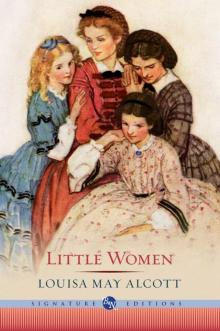 Little Women
Little Women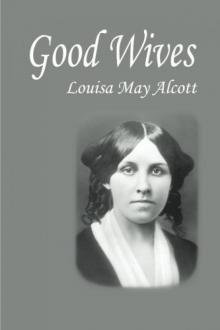 Good Wives
Good Wives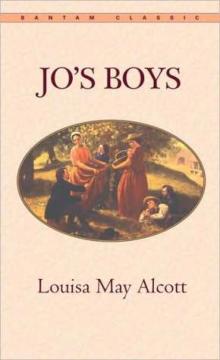 Jo's Boys
Jo's Boys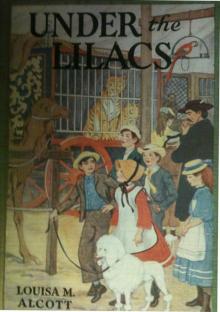 Under the Lilacs
Under the Lilacs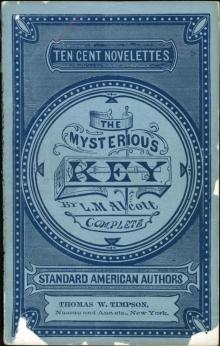 The Mysterious Key and What It Opened
The Mysterious Key and What It Opened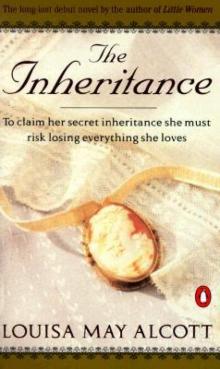 The Inheritance
The Inheritance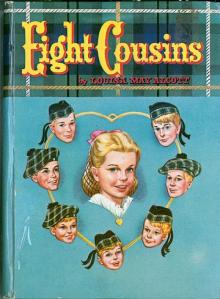 Eight Cousins
Eight Cousins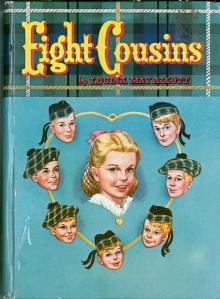 Eight Cousins; Or, The Aunt-Hill
Eight Cousins; Or, The Aunt-Hill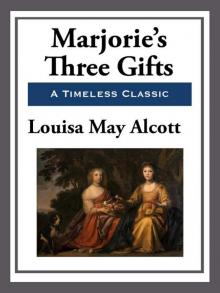 Marjorie's Three Gifts
Marjorie's Three Gifts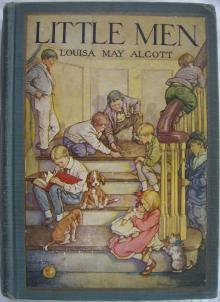 Little Men
Little Men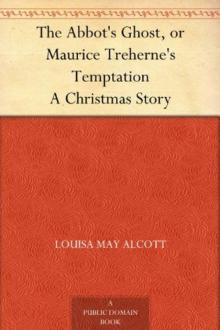 The Abbot's Ghost, or Maurice Treherne's Temptation: A Christmas Story
The Abbot's Ghost, or Maurice Treherne's Temptation: A Christmas Story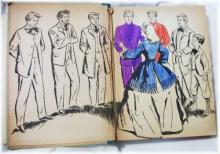 Rose in Bloom
Rose in Bloom Shawl-Straps
Shawl-Straps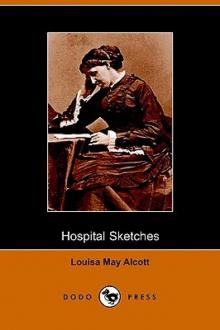 Hospital Sketches
Hospital Sketches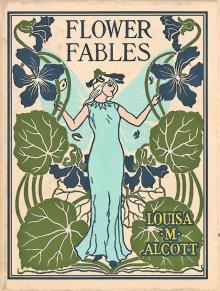 Flower Fables
Flower Fables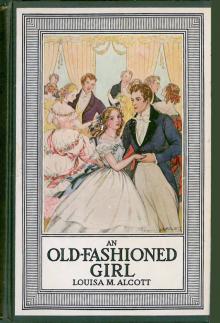 An Old-Fashioned Girl
An Old-Fashioned Girl The Candy Country
The Candy Country Jack and Jill
Jack and Jill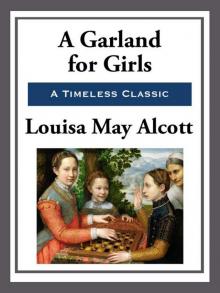 A Garland for Girls
A Garland for Girls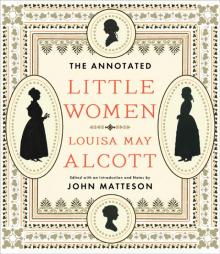 The Annotated Little Women
The Annotated Little Women A Classic Christmas
A Classic Christmas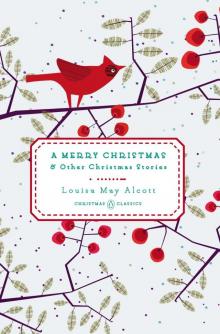 A Merry Christmas
A Merry Christmas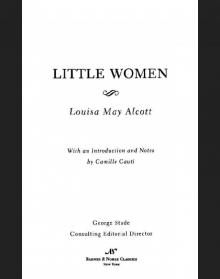 Little Women (Barnes & Noble Classics Series)
Little Women (Barnes & Noble Classics Series)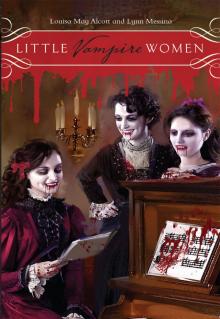 Little Vampire Women
Little Vampire Women